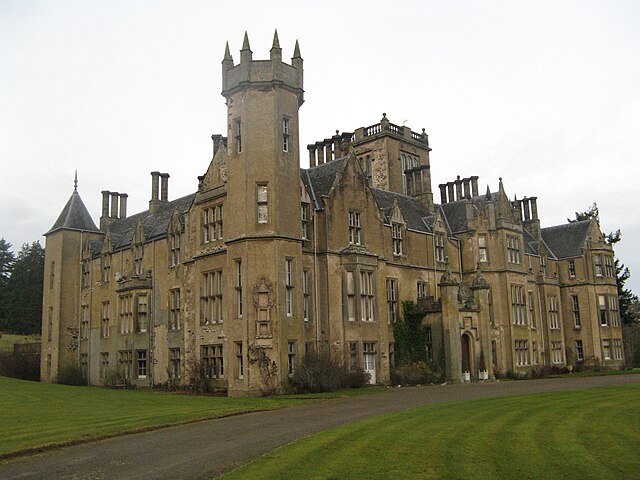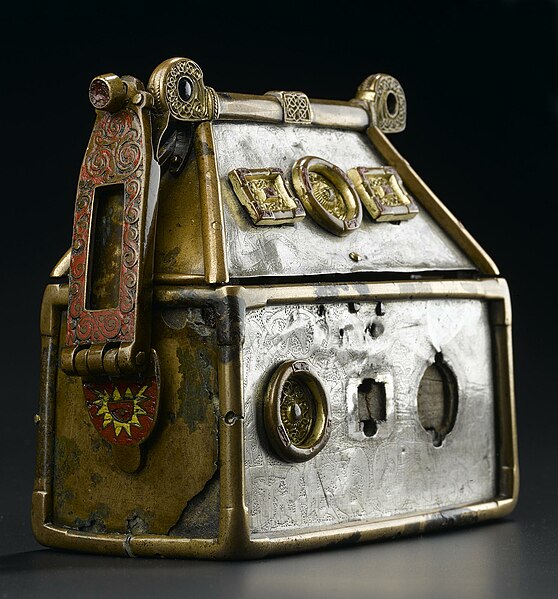Forglen House is a mansion house that forms the centrepiece of the Forglen estate in the parish of Forglen, north-west of Turriff, Aberdeenshire, in the north-east of Scotland. The lands were given to the abbots of the Abbey of Arbroath by King William the Lion before 1211 and the Monymusk Reliquary was held there. The original castle, built around 1346, was replaced by a vernacular harled house that was later extended. Significant development of the estate began when it was acquired by the family of Lord Banff and they started the work of landscaping and planting trees. It became their main family seat during the 18th century. After the death of William Ogilvy, the eighth and final Lord Banff, the estate passed by marriage to the Abercromby baronets who continued to enhance the property and maintained it as their main residence. Sir Robert Abercromby, 5th Baronet commissioned the Aberdeen City Architect, John Smith to design the present house in 1839.
Forglen House
A feature on the 4-storey tower is a triple coat of arms from 1578
The Gothic-style Mausoleum
Detail on the Abercromby memorial
The Monymusk Reliquary is an eighth century Scottish house-shape reliquary made of wood and metal characterised by an Insular fusion of Gaelic and Pictish design and Anglo-Saxon metalworking, probably by Ionan monks. It is now in the National Museum of Scotland in Edinburgh.
The Monymusk Reliquary, early 8th century, National Museum of Scotland
Front view; one of two enamelled hinge plates survive that would have attached a strap so that the reliquary could be carried, possibly around the neck.
The casket and lid are each carved from a solid piece of wood, and covered in thin bronze and silver plates.
Side view







